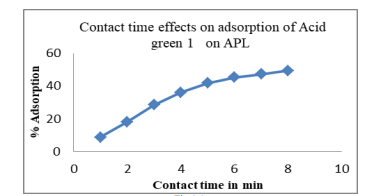Adsorption and Kinetic Studies of Acid Green 1 Dye on Anadendron Parviflorum Leaves
Keywords:
Acid green 1 dye, Adsorption, Kinetics, APL, adsorbent, Adsorption capacityAbstract
The leaves of Anadendron parviflorum leaves (APL) were utilized as a low-cost bio-adsorbent in this experimental study to remove acid green 1 an aqueous solution that contains dye. Adjusting the method that was used in the adsorption of the dye molecules are contact time, adsorbent dose, initial concentration, temperature, addition of salt, particle size, pH, and zero point pH. Both pseudo first order and pseudo second order kinetics , which were used to study adsorption kinetics. The rate of adsorption of acid green 1 dye is associated with kinetics that are of the pseudo first order. As a result, the adsorption technique demonstrates that APL has a high efficient adsorption capacity for acid green 1 dye.
References
M. Khan, S. Zafar, H. Badar, M. Hussain, and Z. Shafiq, “Use of morus alba L. Leaves as biosorbent for the removal of Congo red dye,” Fresenius Environmental Bulletin, Vol.24, pp.2251–2258, 2015.
R. Ahmed, R. R. Rafia, and M. A. Hossain, “Kinetics and thermodynamics of acid red 1 adsorption on used black tea leaves from aqueous solution,” International Journal of Sciences, Vol.10, No.6, pp. 7–15, 2021.
G. Crini and E. Lichtfouse, “Advantages and disadvantages of techniques used for wastewater treatment,” Environ Chem Lett, Vol.17, No.1, pp.145–155, 2019, doi: 10.1007/s10311-018-0785-9.
G. V. Krishna Mohan, A. Naga Babu, K. Kalpana, and K. Ravindhranath, “Removal of naphthol green B dye from polluted waters using hydrogen peroxide treated red mud,” Der Pharma Chemica, Vol.8, No.19, pp.403–414, 2016.
M. F. Attallah, I. M. Ahmed, and M. M. Hamed, “Treatment of industrial wastewater containing Congo Red and Naphthol Green B using low-cost adsorbent,” Environ Sci Pollut Res, Vol.20, No.2, pp.1106–1116, 2013, doi: 10.1007/s11356-012-0947-4.
M. I. Khan et al., “Leaves powder of syzgium cumini as an adsorbent for removal of congo red dye from aqueous solution,” Fresenius Environ. Bull, Vol.27, pp.3342–3350, 2018.
D. Jirekar, A. Pathan, and M. Farooqui, “Adsorption studies of Methylene blue dye from aqueous solution onto phaseolus aureus biomaterials.,” Orient. J. Chem, Vol.30, No.3, pp.1263–1269, 2014. doi: 10.13005/ojc/300342.
W. C. Wanyonyi, J. M. Onyari, and P. M. Shiundu, “Adsorption of Congo red dye from aqueous solutions using roots of Eichhornia crassipes: kinetic and equilibrium studies,” Energy Procedia, vol. 50, pp.862–869, 2014.
E. L. Foletto, C. T. Weber, D. A. Bertuol, and M. A. Mazutti, “Application of Papaya Seeds as a Macro-/Mesoporous Biosorbent for the Removal of Large Pollutant Molecule from Aqueous Solution: Equilibrium, Kinetic, and Mechanism Studies,” Separation Science and Technology, Vol.48, No.18, pp.2817–2824, 2013. doi: 10.1080/01496395.2013.808213.
M Rajeswari,K Arivalagan “Kinetic and Thermodynamic Studies on the Adsorption Behavior of Naphthol Green B Using Casuarina Equisetifolia Bark Carbon,”Sholars Journal of Engineering and Technology (SJET),vol.5(5) pp.221-225, 2017. doi:10.21276/sjet

Downloads
Published
How to Cite
Issue
Section
License

This work is licensed under a Creative Commons Attribution 4.0 International License.
Authors contributing to this journal agree to publish their articles under the Creative Commons Attribution 4.0 International License, allowing third parties to share their work (copy, distribute, transmit) and to adapt it, under the condition that the authors are given credit and that in the event of reuse or distribution, the terms of this license are made clear.





